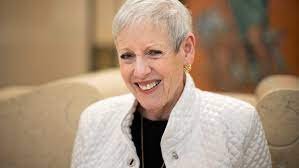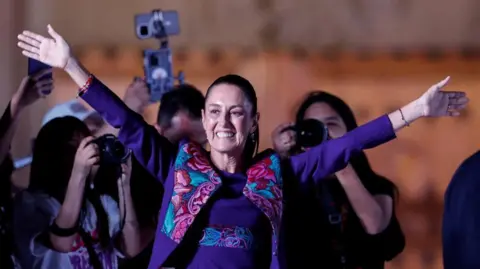After splitting with her political party and voting against Republican-drawn legislative and congressional maps, Ohio Supreme Court Chief Justice Maureen O’Connor received letters from Ohioans thanking her for her courage.
She brushes aside the praise. She says she was only doing the right thing.
“People think, ‘Well, you’re a Republican and you sided with three Democrats, that must have taken courage.’ But I’ve never been that kind of a Republican. I’ve never been that kind of a party person,” O’Connor said as her two decades on the court comes to a close. “Let’s put it this way, the bridges I burned, I never would use them anyway to get across.”
Ohio redistrictingOhio just voted with unconstitutional maps. What comes next for redistricting?
And to lawmakers who threatened to impeach her and party leaders who removed her photo from Ohio Republican Party headquarters because of her redistricting decisions, O’Connor said “I’ve been called worse by better. And I don’t care.”

The Ohio Constitution prohibits judges from seeking election after age 70 − a rule O’Connor calls foolish and ridiculous. As a result, O’Connor steps down Dec. 31.
Maureen O’Connor’s future
Ohio has not seen the last of Maureen O’Connor.
She wants to put a constitutional amendment to change Ohio’s redistricting process − again − on the statewide ballot as early as 2024. Who will be involved, how it’ll be funded or what the details will be have yet to be determined. But O’Connor says the starting point should be establishing an independent commission.
“You have to take it away from the politicians and I think that, put to the voters, honestly, will get approved,” she said, adding that she expects opponents to lob “lies and distortions.”
Ohio voters approved legislative and congressional redistricting reforms in 2015 and 2018. This year the new rules were put to the test when new political maps were drawn.

O’Connor sided with Justices Jennifer Brunner, Michael Donnelly and Melody Stewart − three Democrats − in multiple rulings that the congressional and legislative maps were unconstitutional. The seven-member Ohio Redistricting Commission ignored the state supreme court orders to redraw the maps.
“It is a horrible example of one branch of government disrespecting (another branch) because they don’t like the decision. C’mon, you think people can do that? I mean, the average citizen says ‘I don’t like that law. I know they passed it but I don’t have to obey it.’? C’mon,” said O’Connor in an interview with USA TODAY Network Ohio bureau.
After a career as a Republican elected official, O’Connor says she doesn’t share the values now displayed in the GOP. “I didn’t and I still don’t. Never did. Never would.”
While still a registered Republican, O’Connor declined to disclose how she voted in the 2022 midterms.
What is Chief Justice Maureen O’Connor’s track record?
O’Connor grew up in Parma and Strongsville near Cleveland in an Irish-Catholic family of eight children.
O’Connor graduated law school at Cleveland State University. She served as a probate court magistrate and common pleas court judge in Summit County. When a vacancy occurred, she decided county prosecutor was too important a job to leave to just anybody.
More on Chief Justice O’Connor:Maureen O’Connor commentary: U.S. Supreme Court should allow cameras
O’Connor made the leap to statewide politics as former Gov. Bob Taft’s running mate in 1998. When Taft won, O’Connor took on double duty as lieutenant governor and director of public safety.
Her career highlights include:
- Held statewide elected office longer than any woman in state history.
- Was the second woman to serve as Ohio lieutenant governor.
- Joined the supreme court in 2002 and became the first woman to serve as chief justice in 2011.
- On the court, she heard more than 2,500 oral arguments and wrote 421 majority opinions and 77 dissents.
- Advocated for improvements in capital punishment, bail, criminal justice data and court-imposed fees and fines.

At the ballot box, O’Connor proved to be a powerhouse. In 2002, she won by 500,000 votes. In 2008, she captured nearly 3 million votes − more than former President Barack Obama received. In 2010, she clobbered Democrat Eric Brown, whom former Gov. Ted Strickland had appointed chief justice. And in 2016 she ran unopposed, receiving 3.56 million votes.
Repeatedly, O’Connor chalks up her successes to her staff at the Ohio Supreme Court.
“I don’t do anything alone,” she said. “I always say I hire people that are smarter than me and I listen to them. And they give me good advice and we have great discussions and we come to decisions as needed. I very much respect my staff.”
When asked what advice she’d give to Chief Justice-elect Sharon Kennedy as she takes over the job, O’Connor didn’t hesitate: “Listen to your staff.”




































